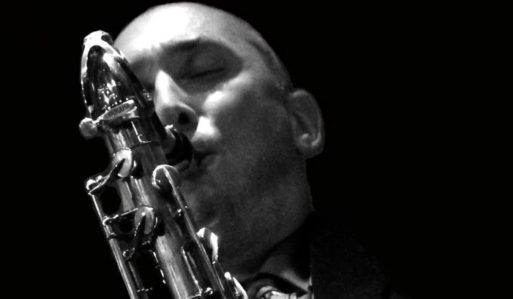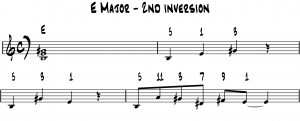Sometimes I find it helpful to spend time working on the modes and 7 main chords in just one key. This helps to strengthen my understanding and visualization of those keys that I end up playing less often.
This lesson outlines an easy melody played through all the modes of concert E major. The chords and related modes are:
Emaj7 (ionian mode)
F#-7 (dorian mode)
G#-7 (phrygian mode)
Amaj7 (lydian mode)
B9 (mixolydian mode)
C#-7 (aeolian mode)
D#-7b5 (locrain mode)
The melody is a common embellishment of a 2nd inversion triad (5, 1, 3). The embellishment uses upper and lower neighbor tones from the key of concert E. The number analysis of the melody is 5, 11, 3, 7, 9, 1.
That same melodic shape is then played ascending through the 7 chords of concert E major giving you many of the specific modal alterations on each chord (i.e. b9 on G# phrygian, #11 on Amaj lydian, natural 11 on B7 mixolydian, b9 on D#-7b5 locrian). Chord based modal melodies like these really help the ear and mind to grasp the melodic specificity of the different modes and how they work together to create an overall key centered, diatonic sound.
In the video demonstration I play the melody at 2 different tempos (80 and 120bpm) in both quarter notes and eight notes. Also, the exercise is played over a concert E pedal for context. To really get the independent sound of each mode, you may want to play each of the one bar melodies over the appropriate root of it’s related chord (i.e. play the phrygian melody over a concert G# pedal, the lydain melody over the concert A pedal).
Try singing the melody in every mode first as this will help you to hear and understand how the modes impact the melody in a very specific way.
You should find that even this simple embellished 2nd inversion triad can help to strengthen your relationship and understanding of this key.
~Enjoy!
.
.

